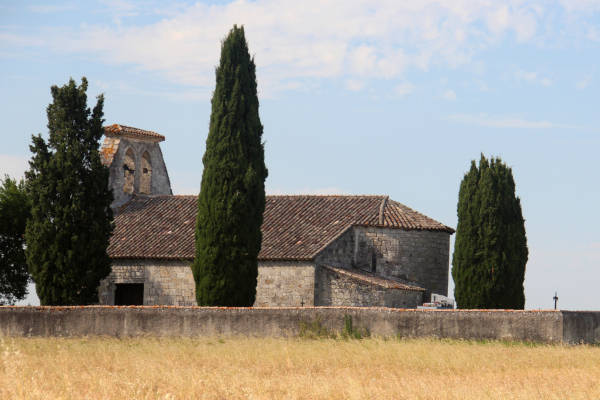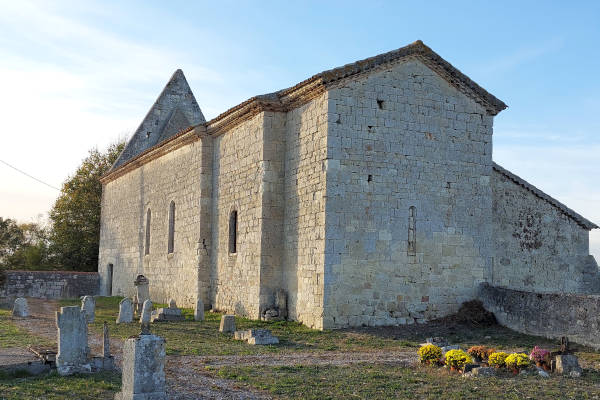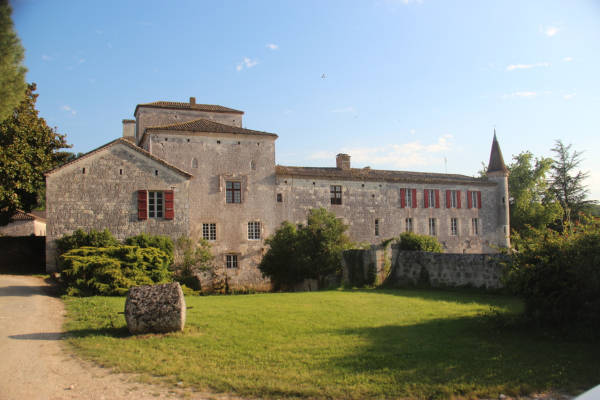Pays de Serres Cluniac Trail
Central loop remarkable sites
Discover the remakable sites you’ll come across on the central loop of the Pays de Serres cluniac route. Their history and architecture are described in a detailed post, which will also give you access to a virtual tour of the site.
Church of Notre Dame de Cambot
The church of Notre Dame de Cambot, in the parish of Tayrac, once belonged to the abbey of Moissac. In 1236 the bishop of Agen gifted Cambot to the abbey of Saint-Maurin.
Church of Saint Amans de Tayrac
The church of Saint-Amans de Tayrac was a dependency of the Saint Maurin abbey. Over time, the church at Tayrac was transformed into a priory
Church of Saint Julien de la Serre
This charming chapel was founded by Hunaud de Gavarret, the second Cluniac abbot of Moissac. It was subsequently given to the Saint-Maurin abbey. The illustrious patronage of Moissac could explain the decoration in this otherwise modest chapel, above all its sculpted capitals.
It is one of St Maurin abbey’s oldest possessions.
Church of Saint Louis de Gandaille
This Romanesque church built of fine stones, laid in regular courses, has been recently restored. Only the nave is original.
In 1243 the abbot of Saint Maurin, Guillaume de Belpech, bought the tithe collection rights.
Church of Saint Martin d’Anglars
This is the parish church of Saint Maurin. It is situated on a level outcrop where its bell tower was able to play a defensive role. During the Hundred Years’ War, the original parish church was burnt and destroyed in 1356 by the Black Prince’s men. The church was rebuilt in 1525. This date accounts for its flamboyant ogival style.
Church of Saint Pierre del Pech
The origins of this church lie in the 11th century; abbot Laffont interpreted the Chi-Rho (see below) as the stone sign of the founder of the church, Hermann de Gavarrès.
The church originally consisted only of the sanctuary (triple chevet with a central tower), which forms the sole ancient part of this little church, according to G. Tholin. The foundations of the nave walls also date from the Middle Ages. The central tower is now lower than originally built.
Under the Ancien Régime, the parish, situated in the diocese of Cahors, came under the Benedictine abbey of Saint-Maurin.
Church of Saint Pierre es liens of Engayrac
The primitive construction seems to date back to the eleventh century. There remains from this period the choir covered with a dome on pendants and the apse in the bottom of the oven.
This parish church of Saint-Pierre es Liens d'Engayrac has the particularity of having a sanctuary that is narrower than the nave, consisting of an apse and a bay surmounted by a square tower (former bell tower).
Church of Saint Sixte
The parish was a dependency of the Cauzac priory. In 1253 the rights of the Saint Maurin abbey over Saint Sixte and its annexe, Gandaille, were recognised by Guillaume, bishop of Agen.
Mill and church ND de Ferrussac
The origins of the fortified mill of Ferrussac go back to the first centuries of our era. Indeed, the church located on the estate (Notre Dame de Ferrussac) most probably rests on the foundations of a Gallo-Roman villa, as attested by the ac ending of the name.
This fortified mill was bought by the abbot of Saint Maurin in 1424; Jean I de Boville usurped its rights and, after arbitration in 1452, kept the estate. It remained in the de Boville family and was offered in 1606 to Bertrand I d'Audevars.









